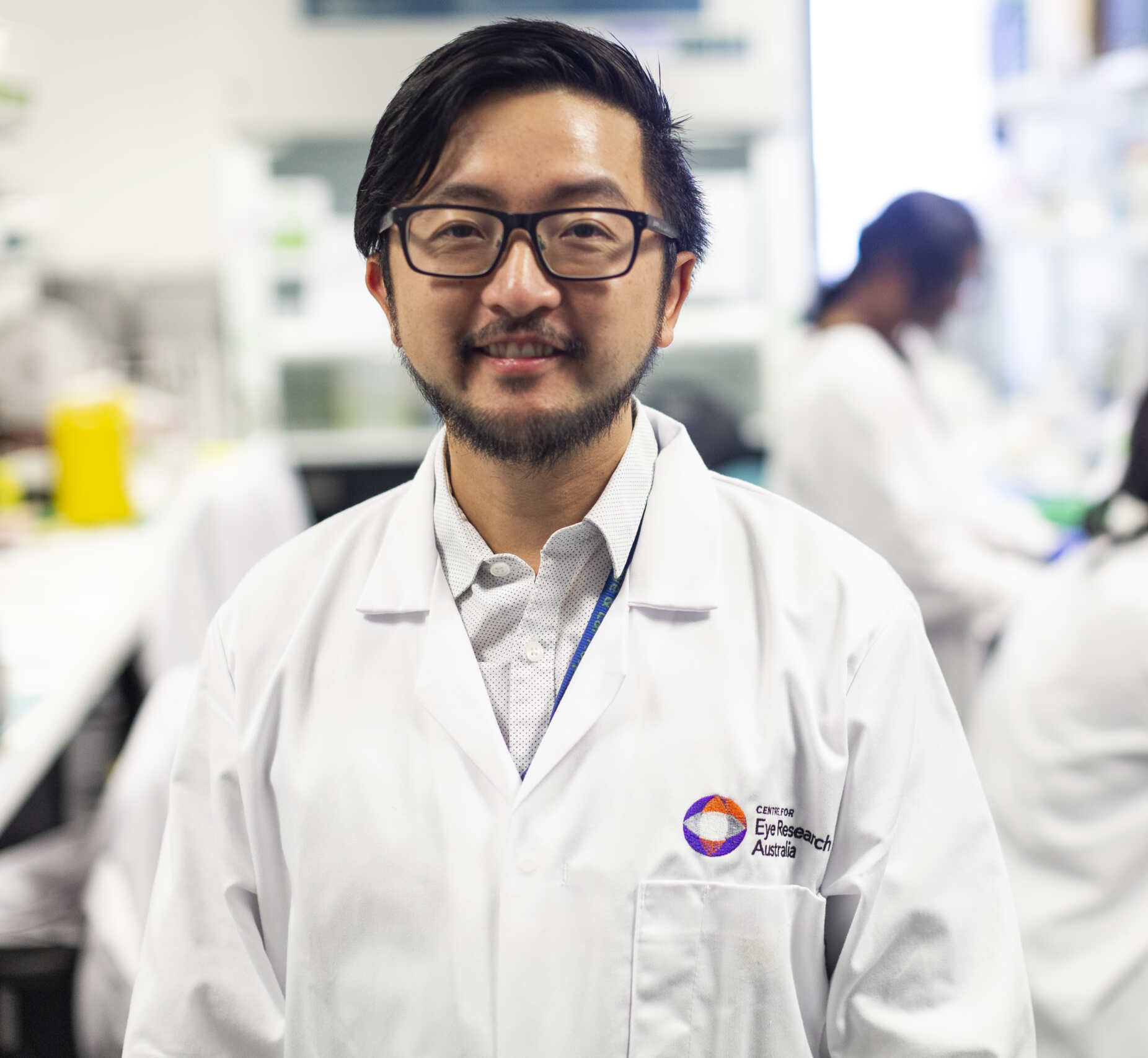14 November, 2023
This is a summary of the webinar held on Saturday 28th October, 2023, featuring Dr Eden Robertson from UNSW, Sydney, and Vivienne Kaiser, from the Children’s Medical Research Centre, Sydney. You can also view a video recording of this event here.
Vision Loss Priority Setting Partnership
Dr Robertson from the University of New South Wales spoke about her work with the Vision Loss Priority Setting Partnership.
Inherited retinal diseases are the leading cause of blindness in children and adults of working age, affecting around 1 in 3,000 people worldwide. Despite rapid medical advancements and research breakthroughs in the past few years, there is still only one gene therapy that can be used to treat one specific type of Inherited Retinal Disease (IRD). Ongoing work in gene therapy and stem cell therapy holds promise for a future without inherited retinal disease but deciding on priorities for research is a challenge. Up until now, research priorities have been set by governments, funding bodies, pharmaceutical companies, and researchers. However, these priorities may not be the same as those of the people who live with an IRD and care for these individuals. This project seeks to involve the patients themselves, along with their families and health professionals who care for them in setting priorities for research.

The method being used for this is a James Lind Alliance Priority Setting Partnership, which aims to identify and prioritise questions that have yet to be answered by research that key stakeholders consider the most important and to drive research that is going to be the most meaningful to those impacted by IRDs.
The first step to a James Lind Alliance Priority Setting Partnership is to create a steering group to guide the project. The Vision Loss Priority Setting Partnership steering group includes family members of those with an IRD, those living with an IRD, representatives of organisations such as Retina Australia, Usher Kids Australia, Blind Citizens Australia, Deaf Blind Australia and the Royal Australian and New Zealand College of Ophthalmologists, as well as researchers and health professionals.
The second step, currently underway, is to undertake a survey of individuals living with IRDs, their families and carers and health professionals, to find out what questions they have about the prevention, diagnosis, disease progression and control, treatment, epidemiology and management of IRDs.
This is an anonymous survey that should take around 5 – 10 minutes, closing on 19th November. It is available at: https://t.ly/8wq6b Alternatively you can complete the survey over the phone or via video call with assistance from Deafblind Australia using Auslan.
At this stage 46 responses have been received, with a variety of questions such as:
· Will I go completely blind?
· How can I slow down my vision loss?
· Do lifestyle factors, e.g. diet affect the progression of Stargardt’s disease?
· What clinical trials are currently available
The third step is another survey, expected to go live in around March 2024, where respondents will be asked to choose the 10 most important questions from a list raised in the first survey.
The fourth step will be to set up a series of workshops with those with lived experience of IRDs to discuss these priorities and finalise a set of 10 priorities to take to funding bodies and researchers. Expressions of interest to join these workshops will be open in around May/June 2024.
The final and critical step in the process is the dissemination of these priorities to funding bodies and researchers, advocating to these bodies for a focus on these priorities in research going forward.
For more information on the project, you can contact Eden Robertson at visionlossPSP@unsw.edu.au or call her on 02-9348 0708 (Mondays and Tuesdays only).
An Introduction to Stem Cell and Gene Therapies
Our second speaker was Vivienne Kaiser, a PhD candidate at Children’s Research Institute, Sydney
Vivienne outlined the work she is involved in with Dr Anai Gonzalez Cordero’s lab using stem cells to treat blindness. (Dr Cordero-Gonzalez is a current recipient of a Retina Australia research grant).

The human body is made up of 30 trillion cells of over 200 different cell types. All these cells derive from a single stem cell type. During the development of an embryo these cells differentiate to become the appropriate specialised cell type, e.g. muscle cells, retinal cells, blood cells etc.
It is possible to take undifferentiated stem cells from an embryo at this blastocyst stage, grow them in a lab and treat them to make them differentiate into the types of cells being studied, e.g. retinal cells. However, the use of embryos is not ideal. Through the work of Japanese researcher and Nobel Prize winner Shinya Yamanaka in 2012 there is now a way to use adult cells, e.g. blood cells or skin cells and “untrain” them with the use of 4 genes to become stem cells again, which can then be used for research in the lab.
There are several advantages of this advance:
- Embryo cells are no longer required
- Cells from any patient can be used, e.g. patients with disease, children, patients with different genetic makeups.
The mission of the work in Dr Cordero-Gonzalez’s lab is to use stem cells derived from adult cells to cure genetic blindness.
By growing these stem cells in cell culture with the appropriate factors the cells instruct each other to become eye cells and form mini-organs, or 3D mini human retinas. These functional retinas can then be used to study disease using gene therapy and cell therapy.
Gene Therapy
By growing these mini-retinas from cells taken from patients with inherited retinal disease, it is possible to deliver a healthy gene to these cells using a safe virus, with the aim of restoring function in the mini-retina or organoid. This process is being studied on over 15 different cell lines at present, focussing on Stargardt’s Disease and Usher Syndrome 1b and 2a. Further specialised work is also work being carried out for Usher’s Syndrome, where inner ear organoids have also been formed.
Cell Therapy
Blood cells are taken from a healthy patient, converted to stem cells and cultured to create healthy retinal organoids. The healthy photo receptor cells are then isolated from the organoids and can then transplanted into a patient with an IRD. So far this has been successfully demonstrated in mice, where vision has been restored using this procedure, which is extremely promising for the future aim of the use of stem cell technology for the restoration of vision.
https://retinaaustralia.com.au/vision-loss-priority-setting-partnership-and-an-introduction-to-stem-cell-gene-therapies/
Other Blogs

Research Grant Impact Highlight: Associate Professor Raymond Wong
Associate Professor Raymond Wong, from the Centre for Eye...

Research Updates on Inherited Retinal Diseases: ARVO 2025 Summary
For those living with inherited retinal diseases (IRDs), and...

New Research: The burden of X-linked retinitis pigmentosa (XLRP) on patient experience and patient-reported outcomes
X-linked retinitis pigmentosa (XLRP) is considered one of the...
